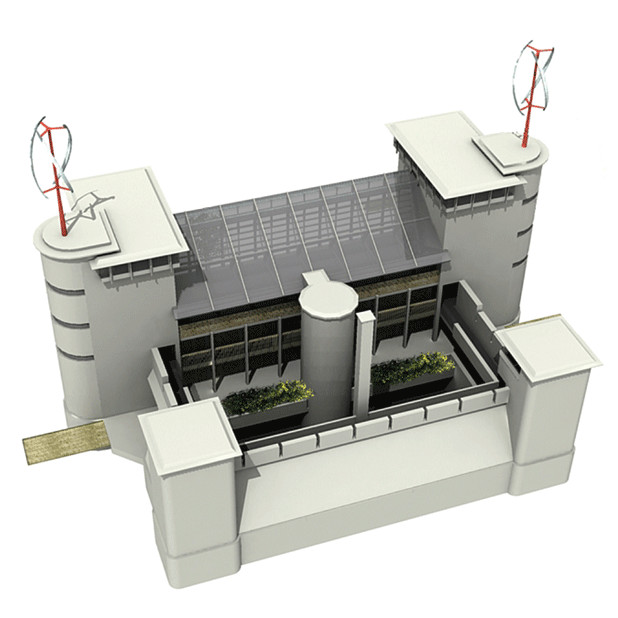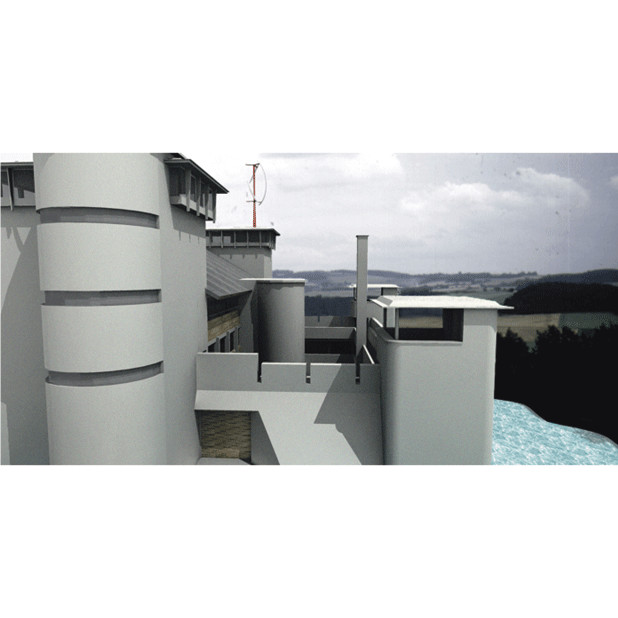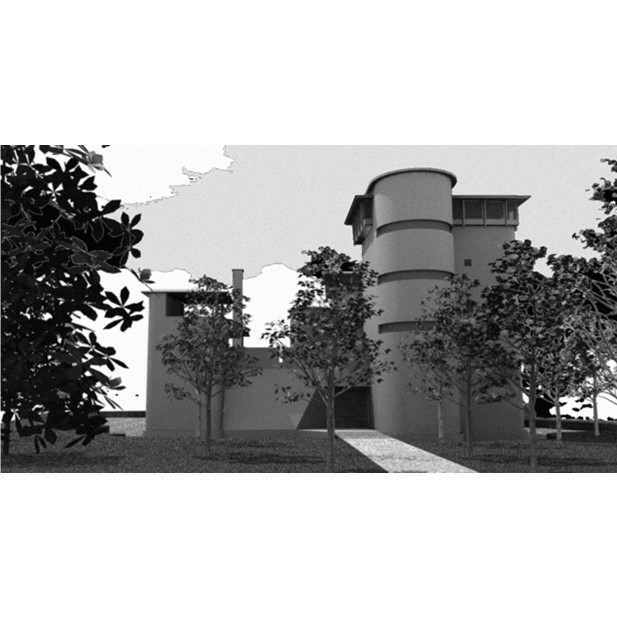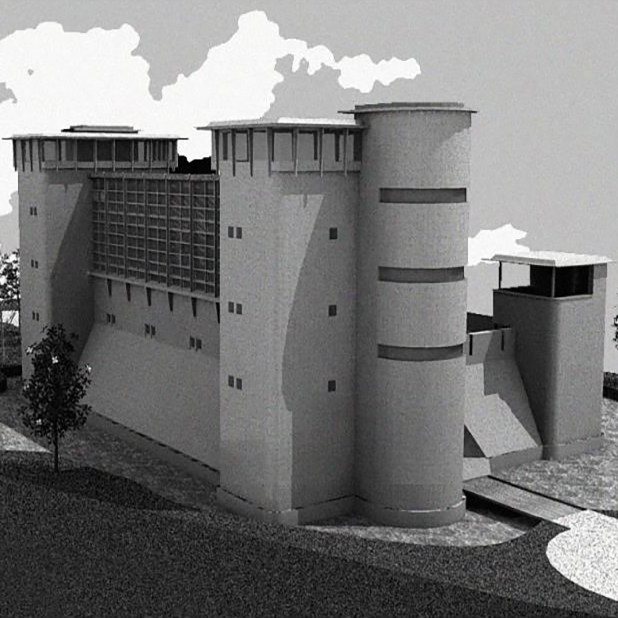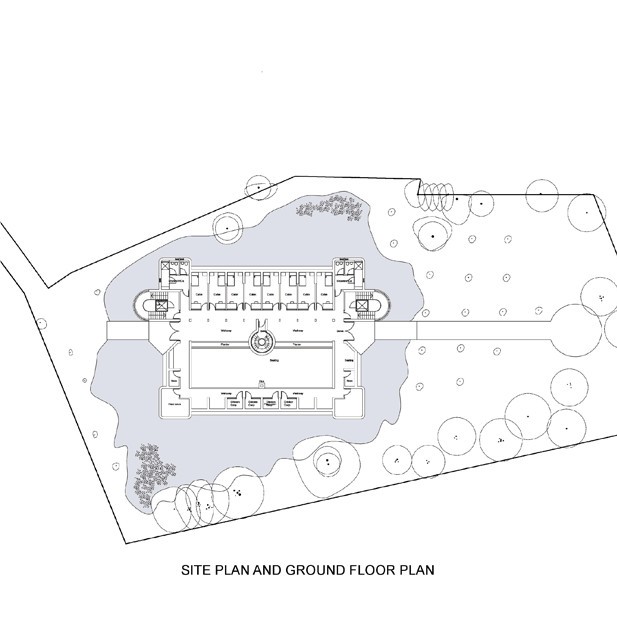A Sustainable Fortress for Greenpeace
This competition entry comprised a multi-purpose information centre and hostel building, capable of sustaining a small community of Greenpeace supporters for a very long period. This was achieved by the provision of inward looking cabin like sleeping accommodation and large social spaces, supported by means of numerous sustainable systems. These include, wind turbines, photovoltaic panels, a ground source heat pump combined with a borehole for obtaining ground water, a sophisticated state of the art water filtration system, rainwater harvesting and large water storage tanks, fibre optics and sun pipes to provide effective lighting to all internal spaces, and WCs of both the grey water and composting types. Food production was achieved by means of an indoor allotment within the high level conservatory, and a herb garden supplemented with a few fresh eggs from the chicken run and honey from the bee hives. Until such time as the community might be forced to retreat inside the building, additional food would be available from the grounds where an orchard has already been planted and will be retained. The form and construction of the building was designed to aid physical resistance to eviction from the land. The high level timber framed and glass clad control room and meeting rooms were designed to be reminiscent of airport control towers. The curved ends and horizontal slot windows were inspired by the sculptural WWII Nazi gun emplacements on Guernsey and Jersey. The scheme was successful enough to be placed on Greenpeace’s “longlist” and was displayed to the public at an exhibition at the OXO Tower in London in June 2010.
Architects: Adrian Morrow in collaboration with Hugo Hardy.
M+E Consultant: John-Paul Cain. Cain Consulting.
Structural Engineer: Mark French. JPP Consulting.
Quantity Surveyor: Piers Willmott. Kirkby and Diamond
Sustainable concrete consultant: Dave Suart. Lafarge.
Estimated cost: £4,379,970.00 including consultants fees.
Date submitted: May 2010.



